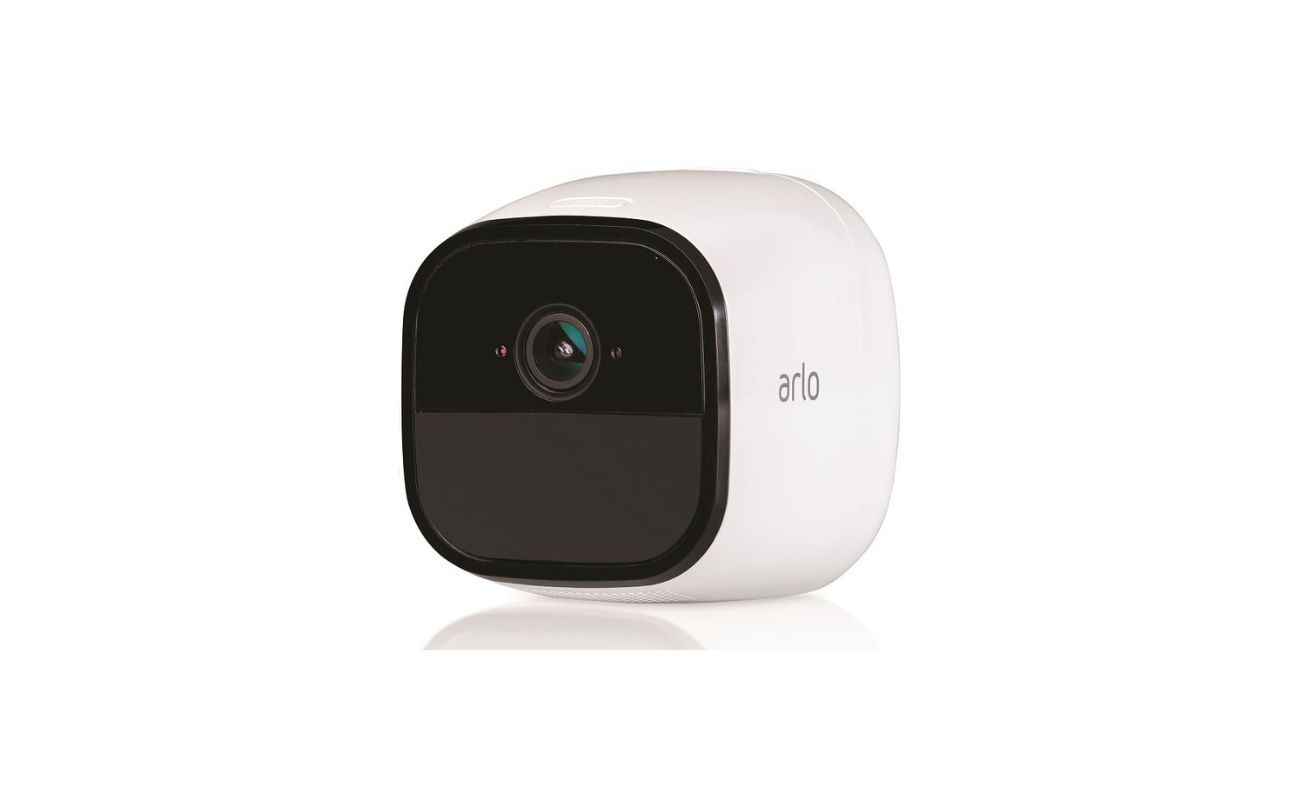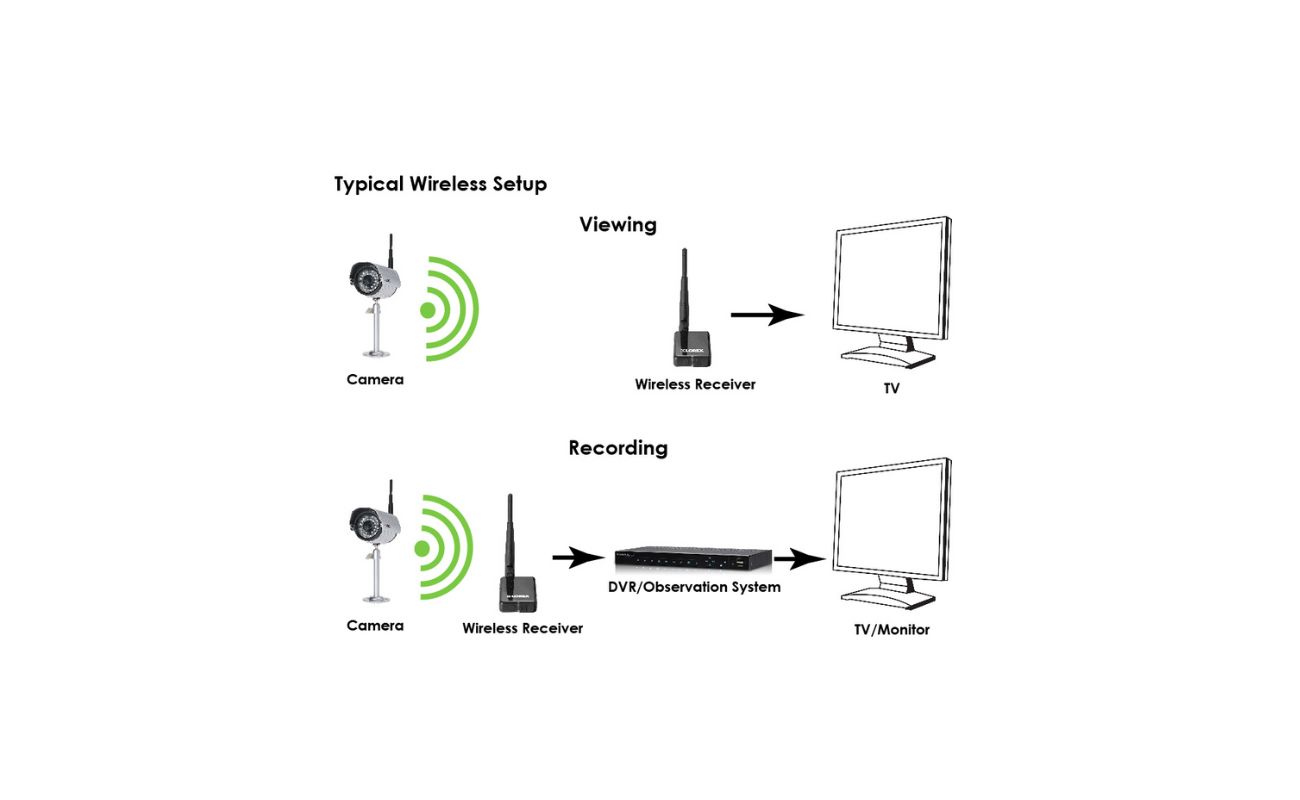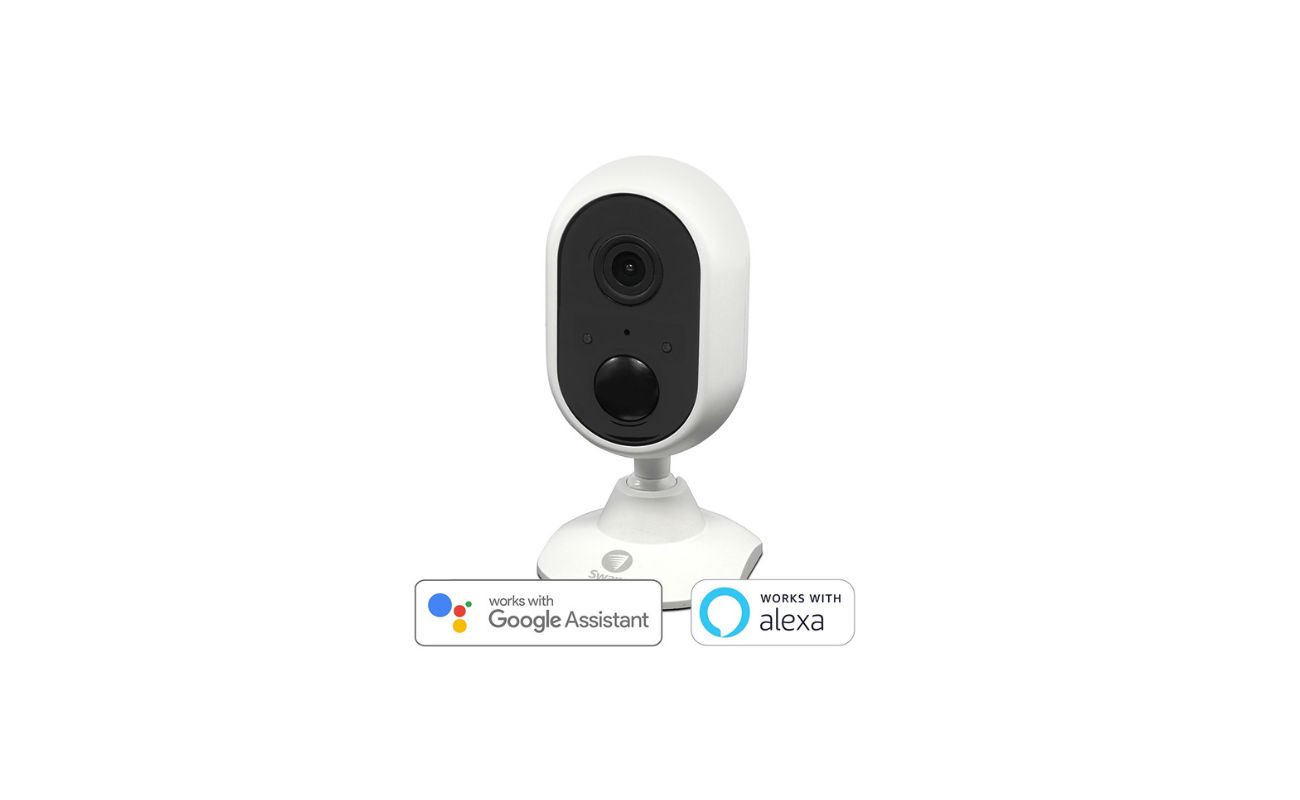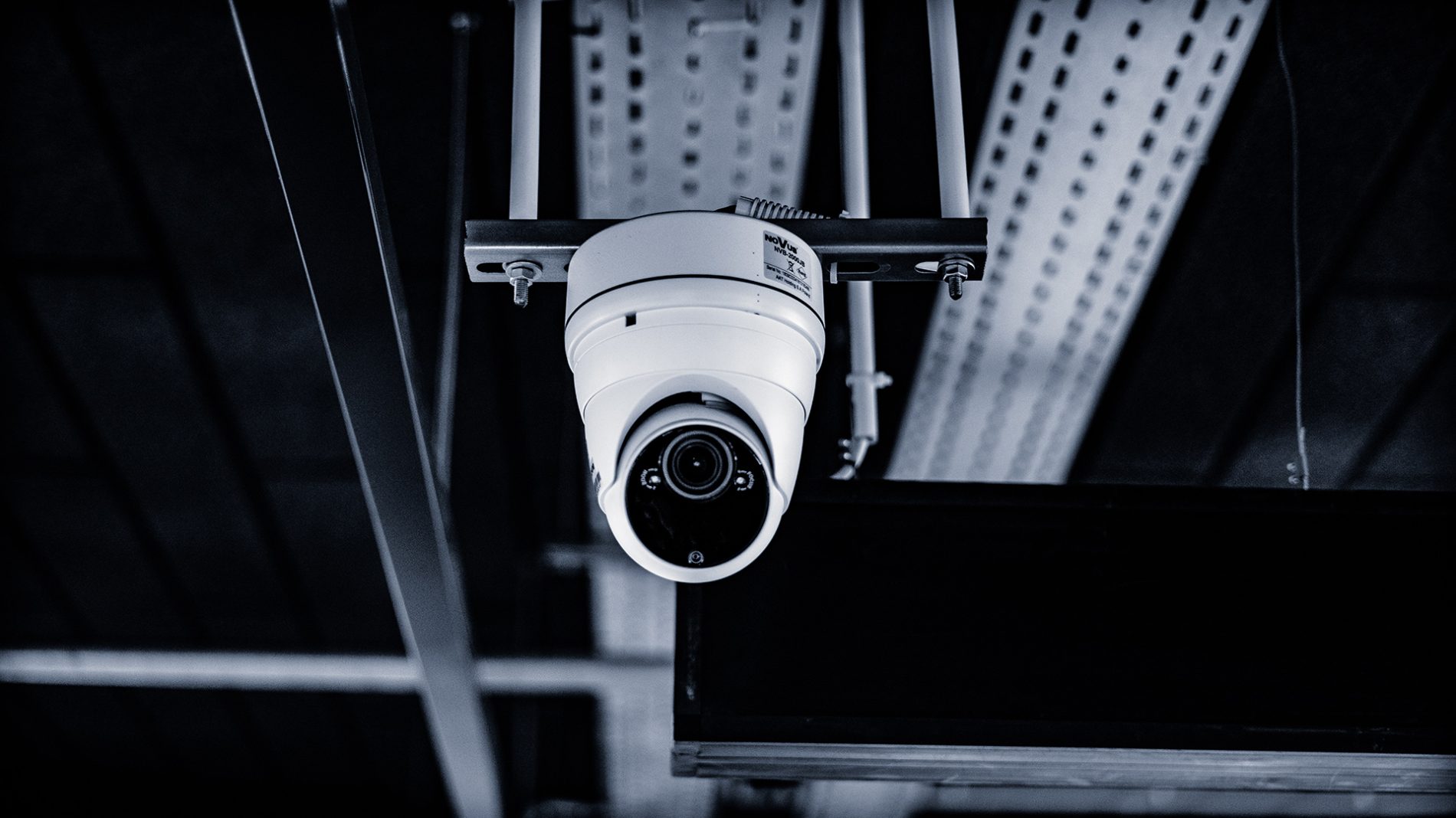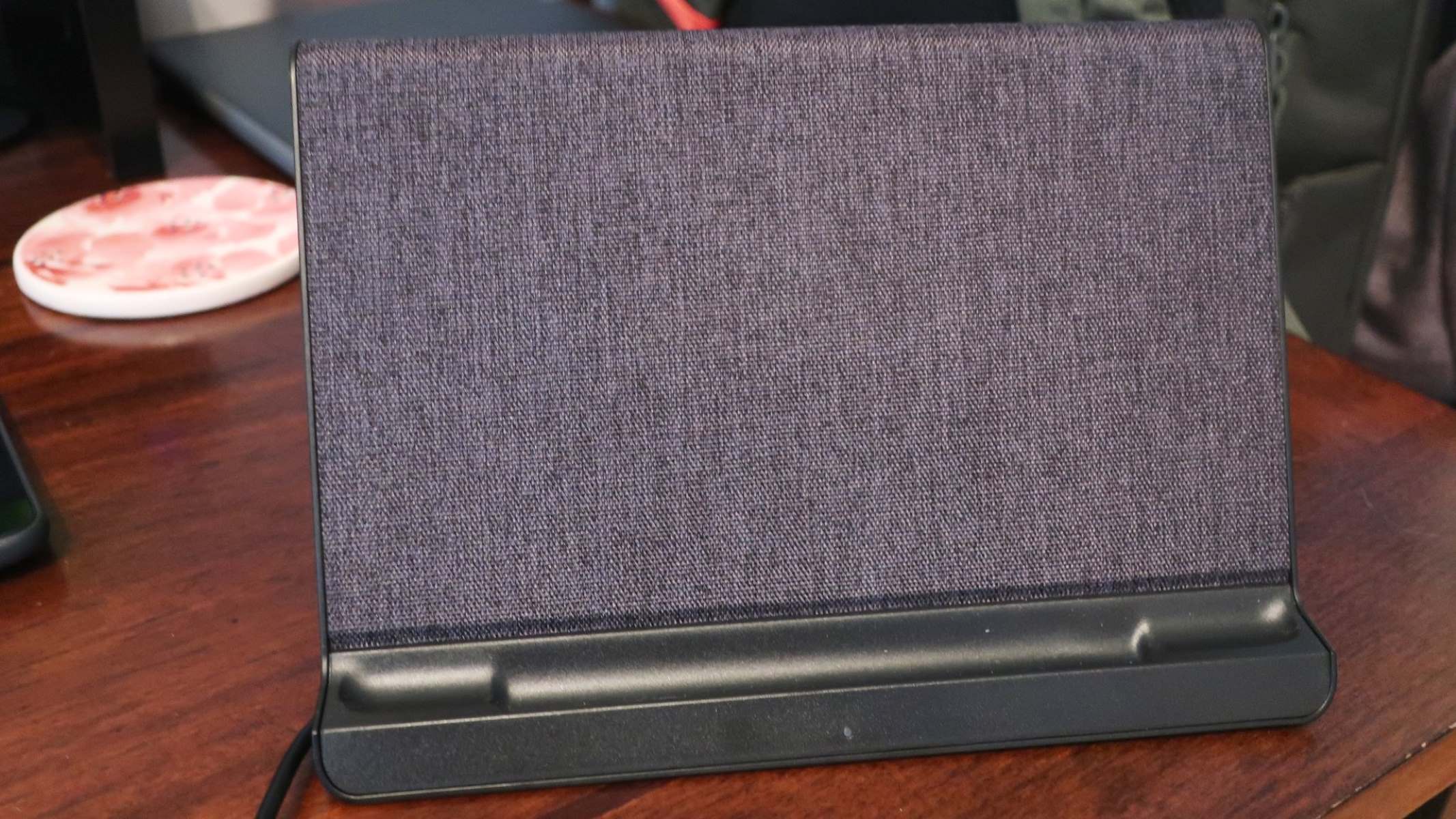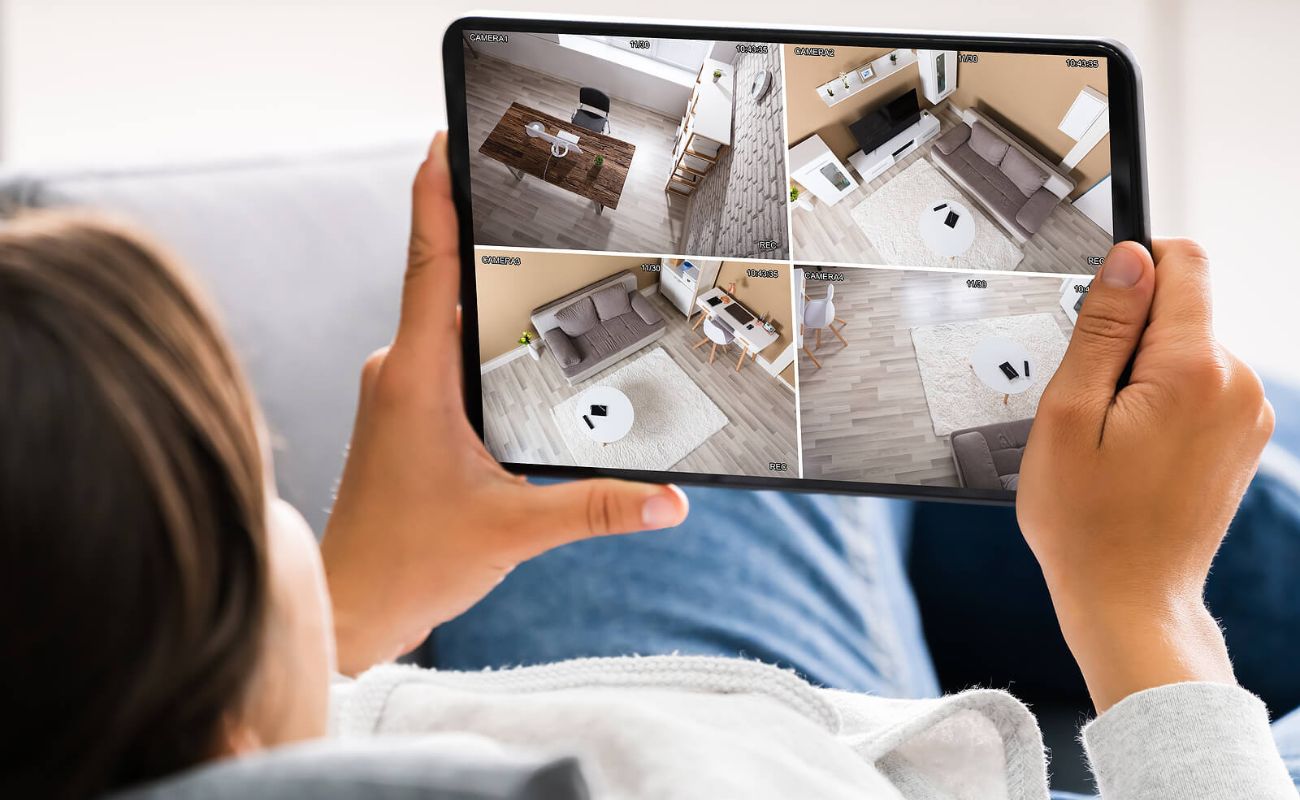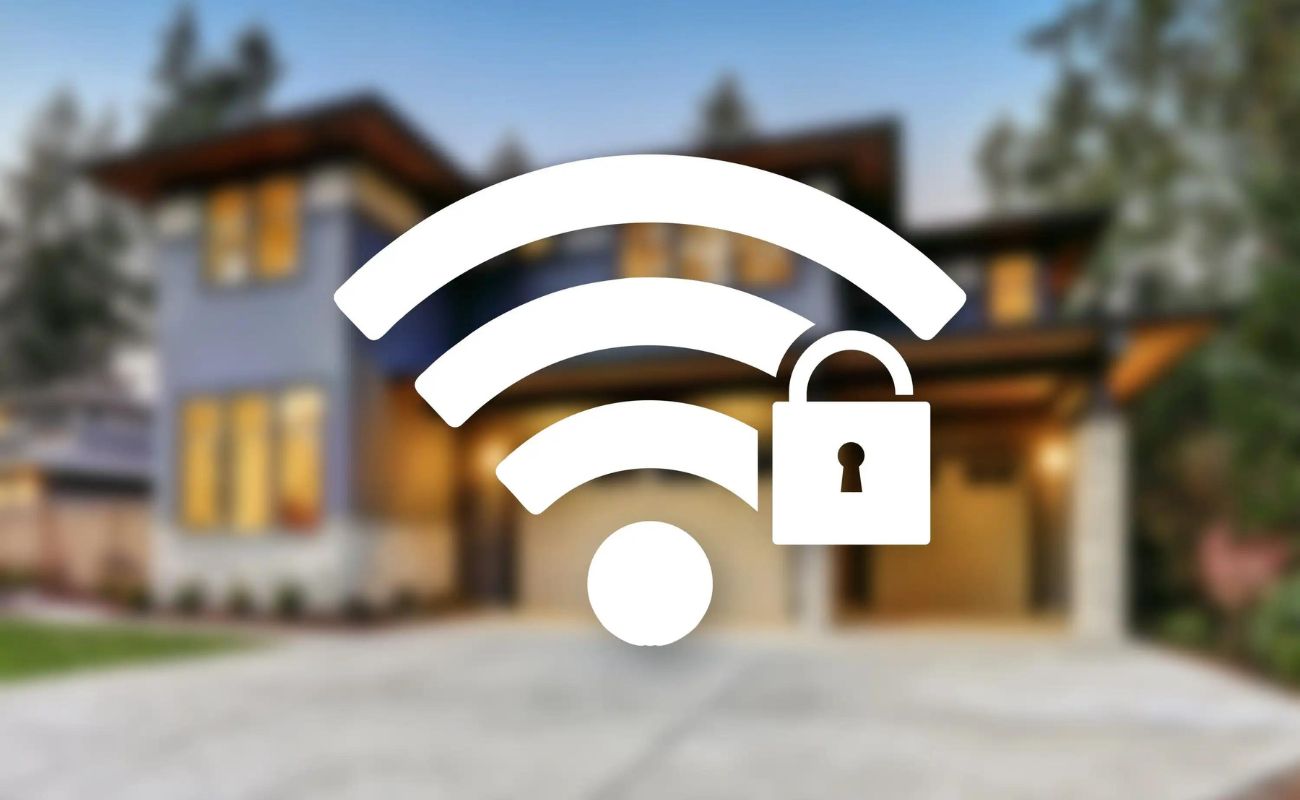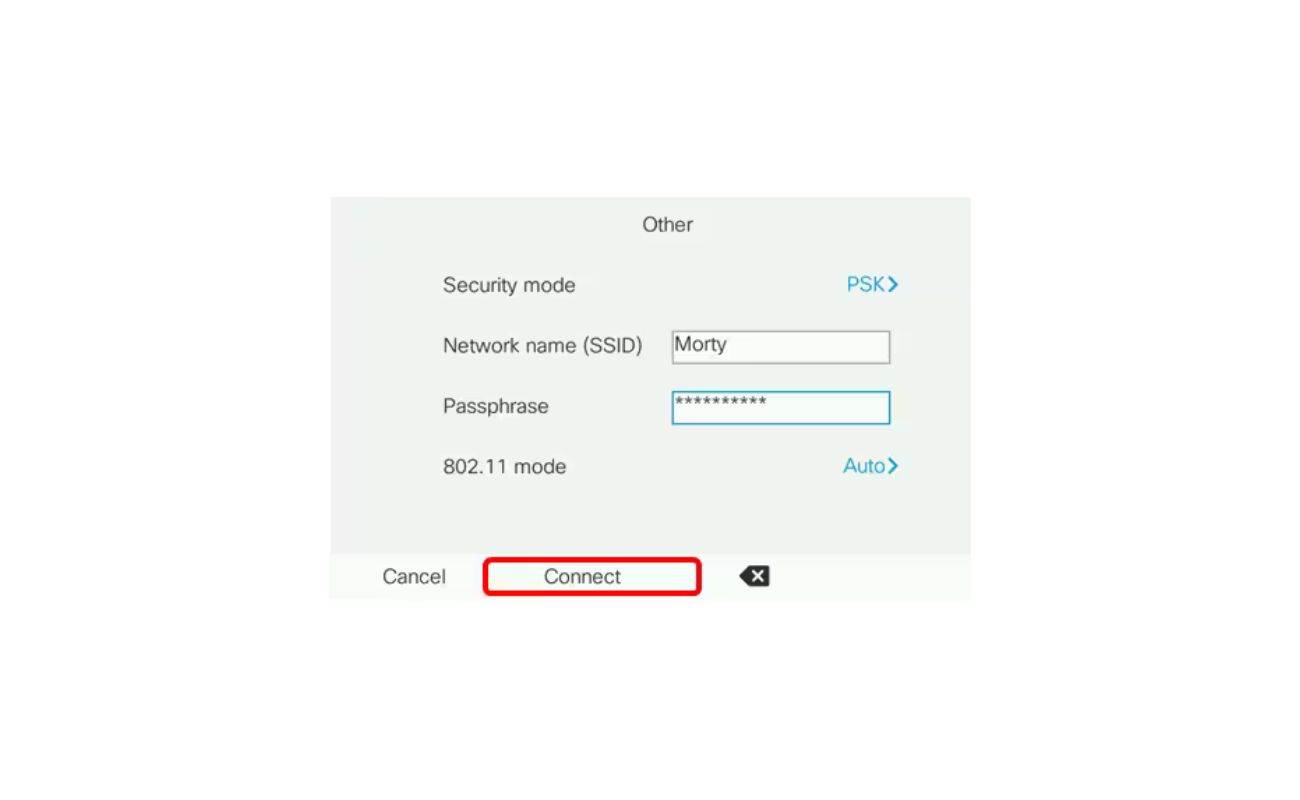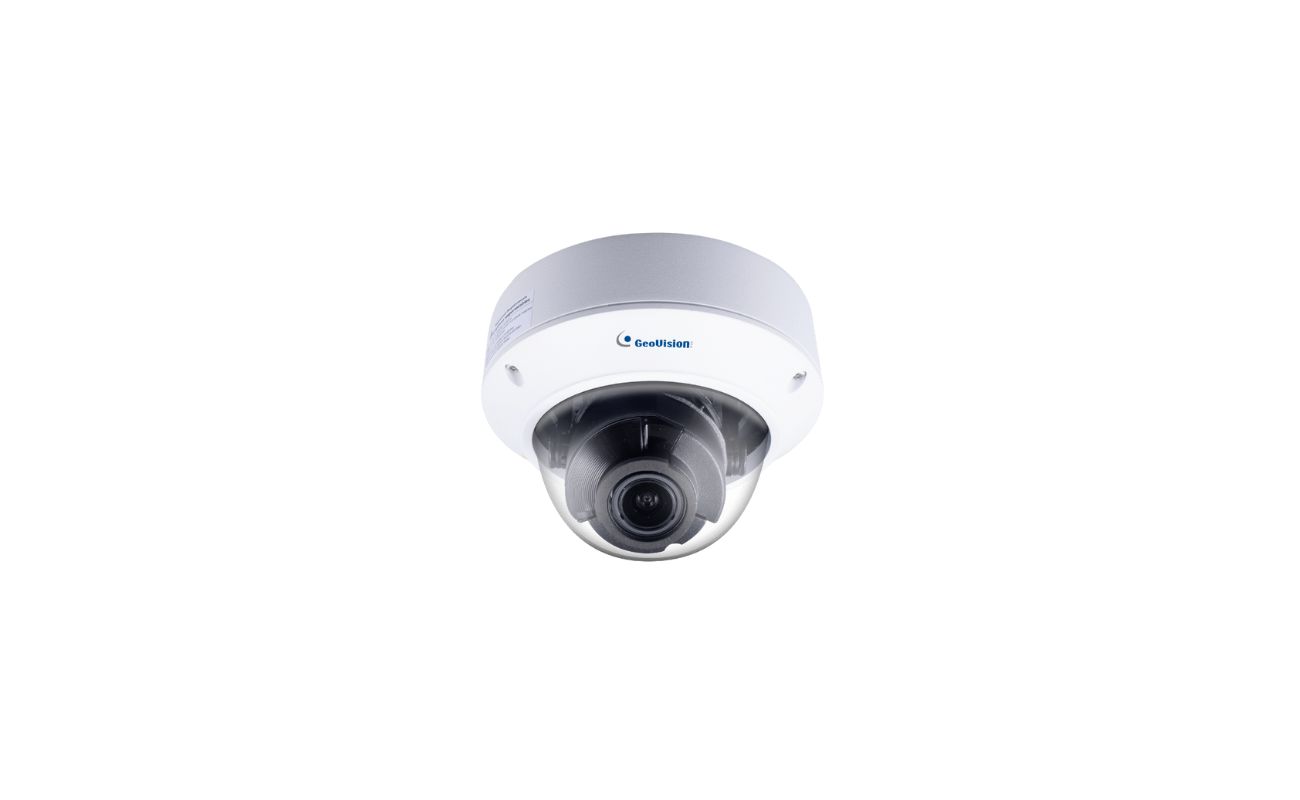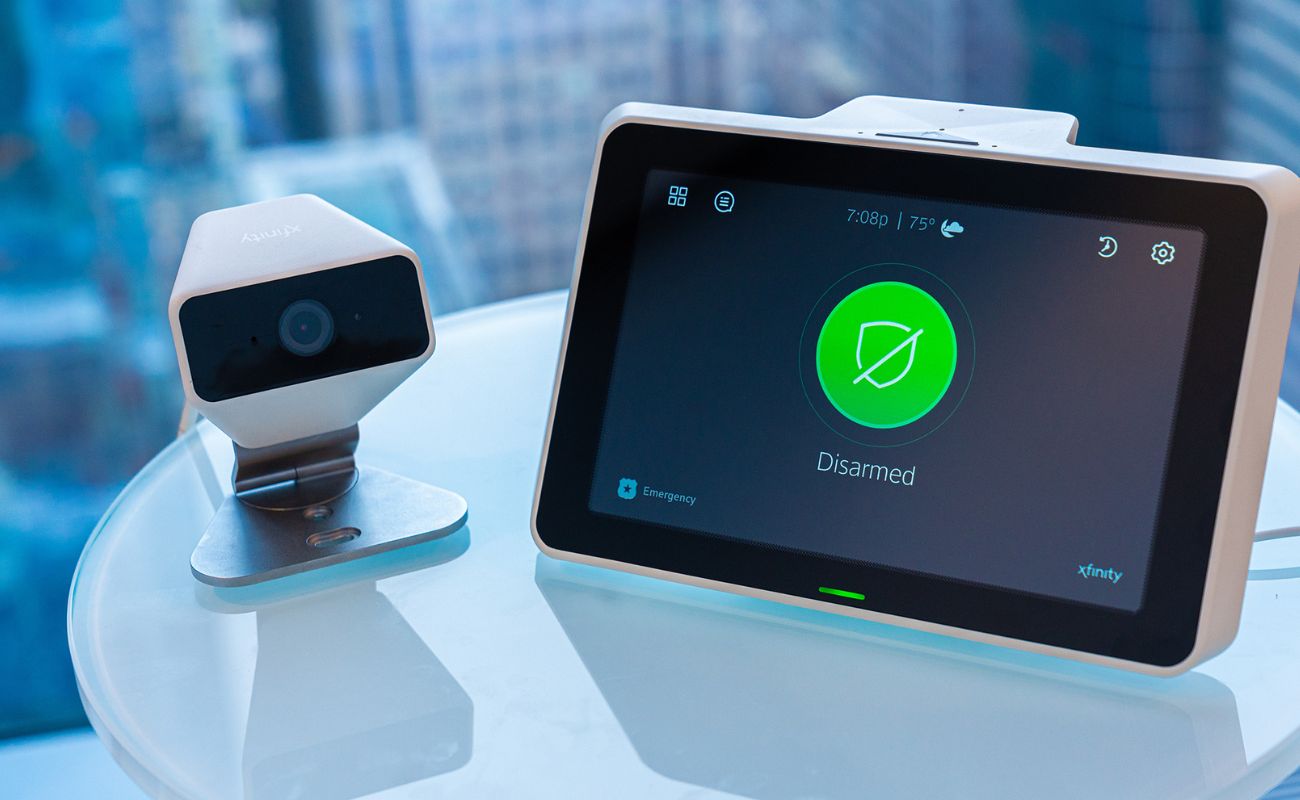Home>Home Security and Surveillance>What Forms Of Wireless Security Work On Kindle Fire
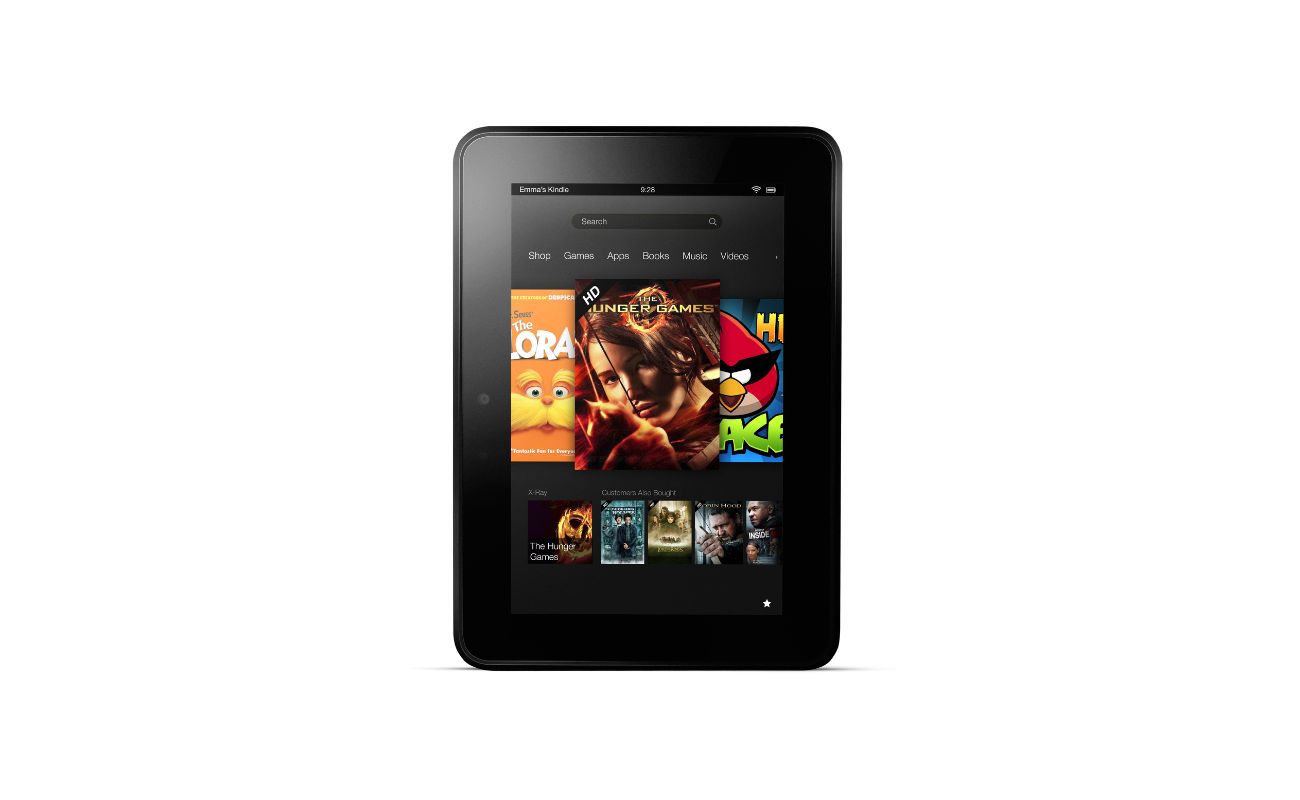

Home Security and Surveillance
What Forms Of Wireless Security Work On Kindle Fire
Modified: March 6, 2024
Find out which wireless security methods are compatible with Kindle Fire. Get the best home security and surveillance options for your device.
(Many of the links in this article redirect to a specific reviewed product. Your purchase of these products through affiliate links helps to generate commission for Storables.com, at no extra cost. Learn more)
What Forms of Wireless Security Work on Kindle Fire
Introduction
Welcome to the world of home security and surveillance. In today’s digital age, protecting our homes and loved ones has become increasingly important. With the advancements in technology, wireless security systems have become a popular choice for homeowners, offering convenience and flexibility. If you own a Kindle Fire, you might be wondering what forms of wireless security are compatible with your device. In this article, we will explore the different types of wireless security options that work seamlessly with your Kindle Fire.
Wireless security systems provide an effective way to monitor and protect your home, allowing you to keep an eye on your property remotely. Whether you are a tech enthusiast or a concerned homeowner, understanding the various wireless security protocols is crucial for setting up a secure and reliable system.
Kindle Fire, with its advanced connectivity features, offers compatibility with a range of wireless security protocols. These protocols ensure that your data is encrypted and your network is secure. Let’s dive into the different wireless security options that are compatible with your Kindle Fire.
Key Takeaways:
- Choose WPA2 for the highest security when setting up Wi-Fi on your Kindle Fire. Avoid WEP due to its vulnerabilities and consider using a VPN for added protection.
- Consider disabling WPS if not needed and use MAC address filtering as an extra layer of security. A VPN can also provide enhanced privacy and security for your Kindle Fire.
Wi-Fi Security
Wi-Fi security is a crucial aspect of protecting your wireless network from unauthorized access and potential security threats. It ensures that your data is transmitted securely over the network and prevents unauthorized users from gaining access to your network and personal information.
When it comes to securing your Wi-Fi network, it is important to understand the different types of security protocols available and their compatibility with your Kindle Fire.
The three most common types of Wi-Fi security protocols are:
- WEP (Wired Equivalent Privacy): WEP was one of the earliest encryption protocols used in Wi-Fi networks. However, it is now considered outdated and easily vulnerable to hacking. Despite this, some older devices may still support WEP encryption. While it is not the most secure option, it can be used as a basic level of protection for your network.
- WPA (Wi-Fi Protected Access): WPA was introduced as a more secure replacement for WEP. It uses a more robust encryption algorithm to protect your network. Most modern devices, including Kindle Fire, support WPA encryption. It is recommended to use WPA whenever possible to ensure the highest level of security for your network.
- WPA2 (Wi-Fi Protected Access 2): WPA2 is currently the most secure Wi-Fi security protocol available. It provides advanced encryption and authentication methods, making it extremely difficult for hackers to compromise your network. Kindle Fire fully supports WPA2 encryption, and it is highly recommended to utilize this protocol for maximum security.
When setting up your Kindle Fire with a Wi-Fi network, it is important to select the appropriate encryption protocol based on the capabilities of your network and devices. It is advisable to use the highest level of security supported by your devices, such as WPA2, to prevent unauthorized access and protect your data.
In addition to encryption protocols, there are other measures you can take to enhance the security of your Wi-Fi network. These include enabling MAC address filtering, setting up a Virtual Private Network (VPN), and using Wi-Fi Protected Setup (WPS) for easy and secure device connection.
Next, let’s delve into these additional security options and how they can further strengthen the security of your Kindle Fire and your home network.
WEP (Wired Equivalent Privacy)
WEP (Wired Equivalent Privacy) is an encryption protocol that was widely used in early Wi-Fi networks. It was designed to provide a level of security that was comparable to wired networks. However, over time, the vulnerabilities in WEP encryption have been exposed, making it relatively easy for attackers to crack the encryption and gain unauthorized access to the network.
Despite its vulnerabilities, some older devices and routers may still support WEP encryption. If you are using a Kindle Fire that is compatible with older Wi-Fi networks or have an older router that only supports WEP, it is important to understand the limitations and risks associated with this encryption protocol.
One of the major vulnerabilities of WEP encryption is its use of a static encryption key. This means that the same key is used for both encryption and decryption of data, and it remains the same until manually changed. Attackers can exploit this weakness by capturing enough data packets and using statistical analysis techniques to crack the key and gain unauthorized access to the network.
Another major flaw in WEP is its weak encryption algorithm. It uses a 64-bit or 128-bit encryption algorithm, which is easily breakable using modern computing power and techniques. This means that even with a strong and complex passphrase, the encryption itself is weak, making it susceptible to attacks.
Due to these vulnerabilities, it is highly recommended to avoid using WEP encryption whenever possible. If your Kindle Fire or router supports more secure encryption protocols like WPA or WPA2, it is advisable to switch to those options for enhanced security.
If, for some reason, you are still required to use WEP encryption, there are a few steps you can take to improve the security of your network:
- Use a longer encryption key: Instead of using the default 64-bit encryption key, opt for the 128-bit key. This can make it slightly more difficult for attackers to crack the encryption.
- Frequently change the encryption key: By regularly changing the encryption key, you can decrease the chances of an attacker capturing enough data packets to crack the key. It is recommended to change the key at least once a month.
- Disable SSID broadcast: By disabling the broadcasting of your network name (SSID), you can make it slightly more difficult for attackers to identify and target your network.
- Implement MAC address filtering: Configure your network to only allow connections from specific MAC addresses. This adds an additional layer of security, but keep in mind that MAC addresses can be spoofed by determined attackers.
While these steps may provide some level of improvement in the security of your WEP network, it is important to note that WEP is still considered highly vulnerable. If possible, it is strongly recommended to upgrade to a more secure encryption protocol, such as WPA or WPA2.
WPA (Wi-Fi Protected Access)
WPA (Wi-Fi Protected Access) is a wireless security protocol that was introduced as an upgrade to the vulnerable WEP encryption. It was designed to provide stronger security measures to protect wireless networks from unauthorized access and potential security threats.
WPA utilizes a more robust encryption algorithm and incorporates additional security features to enhance the overall network security. It offers several advantages over WEP and is widely supported by modern devices, including Kindle Fire.
One of the key features of WPA is that it uses a dynamic encryption key called the Temporal Key Integrity Protocol (TKIP). Unlike WEP, which uses a static encryption key, WPA generates a unique encryption key for each data packet transmitted. This prevents attackers from easily cracking the encryption key and gaining unauthorized access to the network.
Additionally, WPA enhances security through the use of message integrity checks, which help verify the integrity of the data packets being transmitted. This ensures that any tampering or alteration of the data is detected, providing an extra layer of protection.
WPA also introduces the concept of “key rotation” or “key refreshing,” where the encryption key is automatically changed at regular intervals. This further strengthens the security of the network by minimizing the likelihood of successfully cracking the encryption key through statistical analysis.
When configuring WPA on your Kindle Fire and other devices, you will need to set up a passphrase or a pre-shared key (PSK). This passphrase acts as the initial input for generating the encryption key. It is important to choose a strong and complex passphrase to ensure the security of your network.
Some important considerations when setting up WPA security include:
- Use a strong passphrase: A strong passphrase should be at least 12 characters long and include a combination of uppercase and lowercase letters, numbers, and special symbols. Avoid using common words or easily guessable phrases.
- Regularly update the passphrase: It is recommended to change the passphrase every few months or whenever there is a possibility of it being compromised.
- Enable network encryption: Ensure that you enable network encryption in your Kindle Fire settings and select the WPA encryption option.
- Disable WPS (Wi-Fi Protected Setup): WPS can introduce vulnerabilities in your network security, so it is advisable to disable it to prevent any potential security risks.
By implementing WPA on your Kindle Fire and home network, you can significantly enhance the security of your wireless connections. It provides a stronger and more reliable security protocol compared to outdated options like WEP.
However, it is important to note that modern encryption-breaking techniques are continuously evolving. While WPA offers a significant improvement over WEP, a determined attacker may still be able to crack the encryption with sufficient time and resources. Therefore, it is always recommended to stay updated with the latest security measures and periodically review and update your network security settings.
WPA2 (Wi-Fi Protected Access 2)
WPA2 (Wi-Fi Protected Access 2) is the current industry standard for wireless security protocols. It is the successor to WPA and provides the highest level of security for your wireless network, including compatibility with Kindle Fire.
WPA2 builds upon the security features of WPA and incorporates even stronger encryption algorithms and authentication methods, making it significantly more difficult for attackers to compromise your network.
One of the main advantages of WPA2 is the use of the Advanced Encryption Standard (AES) encryption algorithm, which provides robust and efficient encryption for your data packets. AES is considered highly secure and is widely adopted as the encryption standard for various applications.
WPA2 also includes a mandatory encryption protocol called Counter Mode with Cipher Block Chaining Message Authentication Code Protocol (CCMP). CCMP provides both data confidentiality and integrity checks, ensuring that your data is securely transmitted and not tampered with during transmission.
WPA2 offers two different modes of operation:
- WPA2-Personal (WPA2-PSK): This mode is suitable for home networks and small offices. It uses a pre-shared key (PSK) or passphrase for authentication. The same passphrase is used by all the devices connecting to the network, and it is crucial to choose a strong and complex passphrase to prevent unauthorized access.
- WPA2-Enterprise: This mode is designed for larger networks, such as businesses and organizations. It utilizes an authentication server, such as RADIUS (Remote Authentication Dial-In User Service), to provide individual user-based authentication. This mode offers more granular control and centralized management of network access, making it ideal for environments with multiple users and devices.
When setting up WPA2 security on your Kindle Fire, you will need to select the appropriate mode based on your network requirements. For most home users, WPA2-Personal provides adequate security and convenience.
In order to ensure the highest level of security with WPA2, consider the following best practices:
- Use a strong and complex passphrase: The passphrase should be at least 12 characters long and include a combination of uppercase and lowercase letters, numbers, and special symbols. Avoid using easily guessable phrases or personal information.
- Regularly update the passphrase: Change the passphrase periodically to minimize the risk of unauthorized access to your network.
- Enable network encryption: Ensure that the network encryption is enabled and select the WPA2 option in your Kindle Fire settings.
- Disable unnecessary services and features: Disable any unused features and services on your router, such as WPS, to reduce potential security vulnerabilities.
By implementing WPA2 on your Kindle Fire and home network, you can enjoy the highest level of wireless security. However, it is important to keep in mind that no security protocol is completely foolproof. Stay updated with the latest security measures, regularly update your network settings, and follow best practices to maintain the security of your wireless connections.
Enable WPA2 encryption on your wireless network to secure your Kindle Fire. This provides strong protection against unauthorized access.
WPS (Wi-Fi Protected Setup)
WPS (Wi-Fi Protected Setup) is a feature designed to simplify the process of connecting devices to a Wi-Fi network. It aims to make the setup process more user-friendly, especially for users who may not be tech-savvy or familiar with complex network configurations. However, while WPS can provide convenience, it can also introduce security risks if not used correctly.
WPS offers two different methods for connecting devices to a Wi-Fi network:
- Push Button Configuration (PBC): This method involves pressing the WPS button on both the router and the device you want to connect. The two devices automatically exchange the necessary credentials to establish a secure connection. This method is typically used when both devices are in close proximity to each other.
- PIN (Personal Identification Number): With this method, a unique eight-digit PIN is used to connect the device to the router. The PIN can be either printed on a label attached to the router or generated by the device. This method is commonly used when the devices are not in close proximity to each other.
While WPS can provide a convenient way to connect devices, it is important to be aware of the security implications. WPS has been found to have several vulnerabilities that can potentially be exploited by attackers.
One of the most significant vulnerabilities of WPS is the use of a static PIN. The eight-digit PIN used in the connection process is susceptible to brute-force attacks, where an attacker systematically tries different combinations until the correct PIN is found. Additionally, some routers have a default PIN, making it even easier for attackers to gain unauthorized access to the network.
Another vulnerability is the lack of rate limiting on WPS PIN attempts. Unlike other login systems that lock out users after a certain number of failed attempts, WPS allows unlimited PIN attempts. This gives attackers ample opportunity to guess the correct PIN without being detected.
Due to these vulnerabilities, it is recommended to disable WPS if it is not needed for your network. Most modern routers provide an option to disable WPS in the router settings. Disabling WPS eliminates the potential security risks associated with the feature.
If you prefer to use WPS for its convenience, it is essential to take certain precautions to minimize the security risks:
- Change the default PIN: If your router allows you to change the WPS PIN, it is advisable to do so. Choose a strong and unique PIN that is not easily guessable.
- Enable a lockout policy: Some routers allow you to configure a lockout policy that locks the WPS feature after a certain number of failed attempts. This can help mitigate the risk of brute-force attacks.
- Keep your router firmware up to date: Regularly check for firmware updates from your router manufacturer and apply them when available. Firmware updates often include security patches and enhancements that can address vulnerabilities in the WPS feature.
By understanding the potential vulnerabilities of WPS and following the necessary precautions, you can use this feature safely and enjoy the convenience it offers in connecting devices to your Wi-Fi network.
MAC Address Filtering
MAC (Media Access Control) address filtering is an additional security measure that can be implemented on your Wi-Fi network to enhance network security. It works by allowing or denying access to your network based on the MAC addresses of the devices attempting to connect.
Every network-enabled device, including your Kindle Fire, has a unique MAC address, which is a 12-digit alphanumeric code assigned by the manufacturer. By enabling MAC address filtering, you can specify which devices are allowed to connect to your network based on their MAC addresses.
MAC address filtering provides a layer of security by effectively creating a whitelist of devices that are authorized to connect to your network. Any device with a MAC address not included in the whitelist will be denied access, even if they possess the correct network credentials.
To configure MAC address filtering on your router, you will need to follow these steps:
- Access your router’s administration interface by typing its IP address into a web browser.
- Locate the MAC address filtering settings. This can usually be found under the “Wireless” or “Security” settings section.
- Enable MAC address filtering and select the filtering mode (allow or deny). The allow mode allows connections only from MAC addresses specified in the whitelist, while the deny mode blocks connections from MAC addresses specified in the blacklist.
- Enter the MAC addresses of the devices you want to allow or deny access. You can either manually enter the MAC addresses or choose them from a list of connected devices.
- Save the changes and exit the router’s administration interface.
It is important to note that MAC address filtering should not be solely relied upon as the primary method of securing your Wi-Fi network. While it can add an extra layer of protection, MAC addresses can be spoofed or cloned by determined attackers. Therefore, it is recommended to use MAC address filtering in combination with other security measures, such as WPA2 encryption and strong passwords.
Keep in mind that managing MAC address filtering can be a bit cumbersome, especially if you have a large number of devices on your network. Adding or removing devices from the whitelist can require manual intervention and may become time-consuming. Additionally, if you frequently have guests connecting to your network, MAC address filtering may not be practical. In such cases, it is best to rely on other security measures for network protection.
Overall, MAC address filtering can be an effective tool to enhance the security of your Wi-Fi network by allowing only specific devices to connect. It provides an additional layer of control and can help prevent unauthorized access from devices not included in the whitelist. However, it is advisable to use it in conjunction with other security measures for comprehensive network protection.
Virtual Private Network (VPN)
A Virtual Private Network (VPN) is a powerful tool that can greatly enhance the security and privacy of your internet connection, including when using your Kindle Fire. It creates a secure, encrypted tunnel between your device and the VPN server, effectively shielding your online activities from prying eyes.
When you connect to a VPN, your internet traffic is routed through the VPN server before reaching its intended destination. This process ensures that your data is encrypted and keeps your online activities private and secure, even when connected to public Wi-Fi networks or when accessing the internet from remote locations.
Here are some key benefits and use cases of using a VPN on your Kindle Fire:
- Enhanced Security: By encrypting your internet traffic, a VPN protects your sensitive information, such as login credentials, banking details, and personal data, from being intercepted and accessed by unauthorized individuals.
- Bypassing Geographical Restrictions: A VPN allows you to bypass geographical restrictions and access content that may be blocked or limited in your current location. This can be beneficial when streaming content, accessing websites, or using apps that are restricted based on your geographic location.
- Public Wi-Fi Protection: When connecting to public Wi-Fi networks, such as at coffee shops, airports, or hotels, your data is vulnerable to eavesdropping and hacking attempts. With a VPN, your internet traffic is encrypted, protecting your personal information from potential threats.
- Privacy and Anonymity: A VPN masks your IP address, making it difficult for websites, advertisers, and even your internet service provider (ISP) to track your online activities. This helps maintain your privacy and anonymity while using the internet.
- Secure Remote Access: If you need to access your home or office network remotely, a VPN provides a secure way to connect and access the network resources without compromising the security of your data and sensitive information.
When choosing a VPN service for your Kindle Fire, consider the following factors:
- Security Features: Look for a VPN service that offers strong encryption and advanced security protocols, such as OpenVPN or IKEv2, to ensure the highest level of security for your data.
- Server Locations: Ensure that the VPN service has server locations in the countries or regions that you want to access content from or need a secure connection to.
- Speed and Performance: Opt for a VPN service that provides fast and reliable connections to ensure smooth browsing, streaming, and app usage on your Kindle Fire.
- User-Friendly Interface: Choose a VPN service that is easy to set up and use on your Kindle Fire, with a user-friendly interface that allows for seamless navigation and connection management.
- Privacy Policy: Take the time to review the VPN service’s privacy policy to ensure they have strict no-logs policies and prioritize user privacy.
In summary, a VPN offers a secure and private internet connection for your Kindle Fire, protecting your data from hackers, enhancing your online privacy, and allowing you to access restricted content. By choosing a reliable VPN service and configuring it correctly on your device, you can enjoy a safer and more secure online experience on your Kindle Fire.
Conclusion
When it comes to securing your home network and protecting your Kindle Fire, understanding the various wireless security options is crucial. Wi-Fi security protocols such as WEP, WPA, and WPA2 offer different levels of encryption and protections for your wireless network. It is highly recommended to use the most secure option available, WPA2, whenever possible, to ensure the highest level of security for your network.
Additionally, features like WPS can provide convenience in connecting devices to your network, but they also introduce potential security risks. It is advisable to disable WPS if it is not necessary for your network setup.
MAC address filtering adds another layer of security by allowing only specific devices to connect to your network. While it is not foolproof, it can be used in combination with other security measures to enhance network security.
Moreover, leveraging a Virtual Private Network (VPN) for your Kindle Fire can significantly enhance your online security and privacy. It encrypts your internet traffic, protects your sensitive information, and allows you to bypass geographical restrictions while maintaining your anonymity.
In conclusion, securing your home network and protecting your Kindle Fire is vital in today’s digital landscape. By implementing the appropriate wireless security protocols, disabling unnecessary features, using MAC address filtering, and considering a VPN for added security, you can greatly reduce the risk of unauthorized access and keep your network and personal information safe.
Remember to regularly review and update your network settings, practice good password hygiene, and stay informed about the latest security measures to ensure that your home security and surveillance system runs smoothly and securely.
Frequently Asked Questions about What Forms Of Wireless Security Work On Kindle Fire
Was this page helpful?
At Storables.com, we guarantee accurate and reliable information. Our content, validated by Expert Board Contributors, is crafted following stringent Editorial Policies. We're committed to providing you with well-researched, expert-backed insights for all your informational needs.

